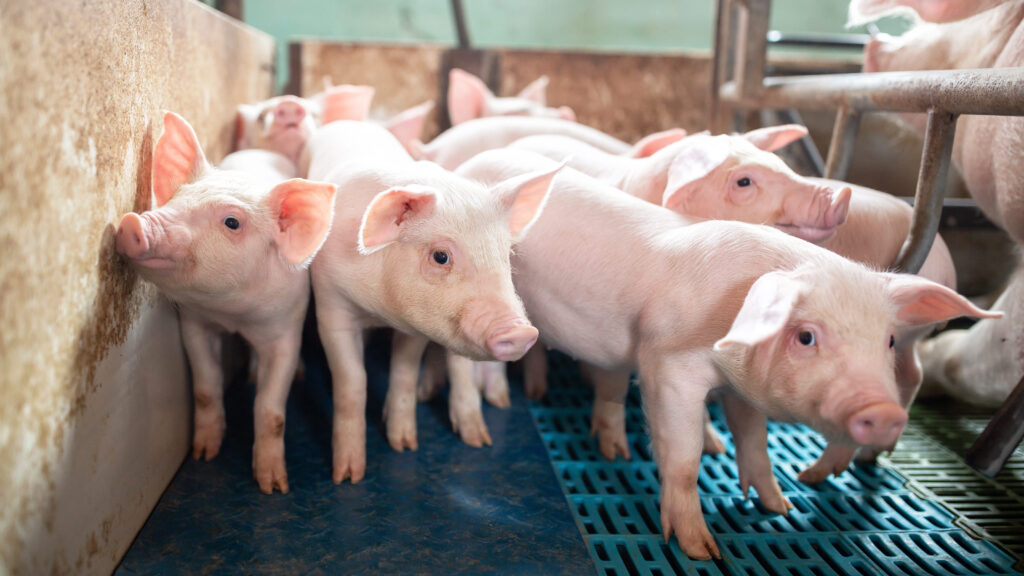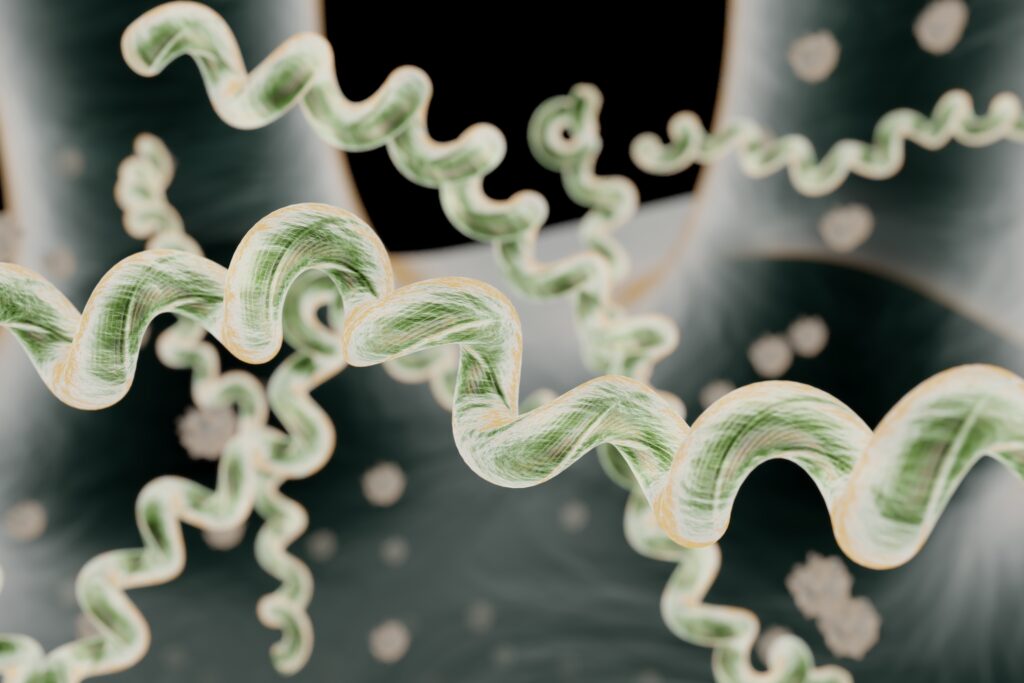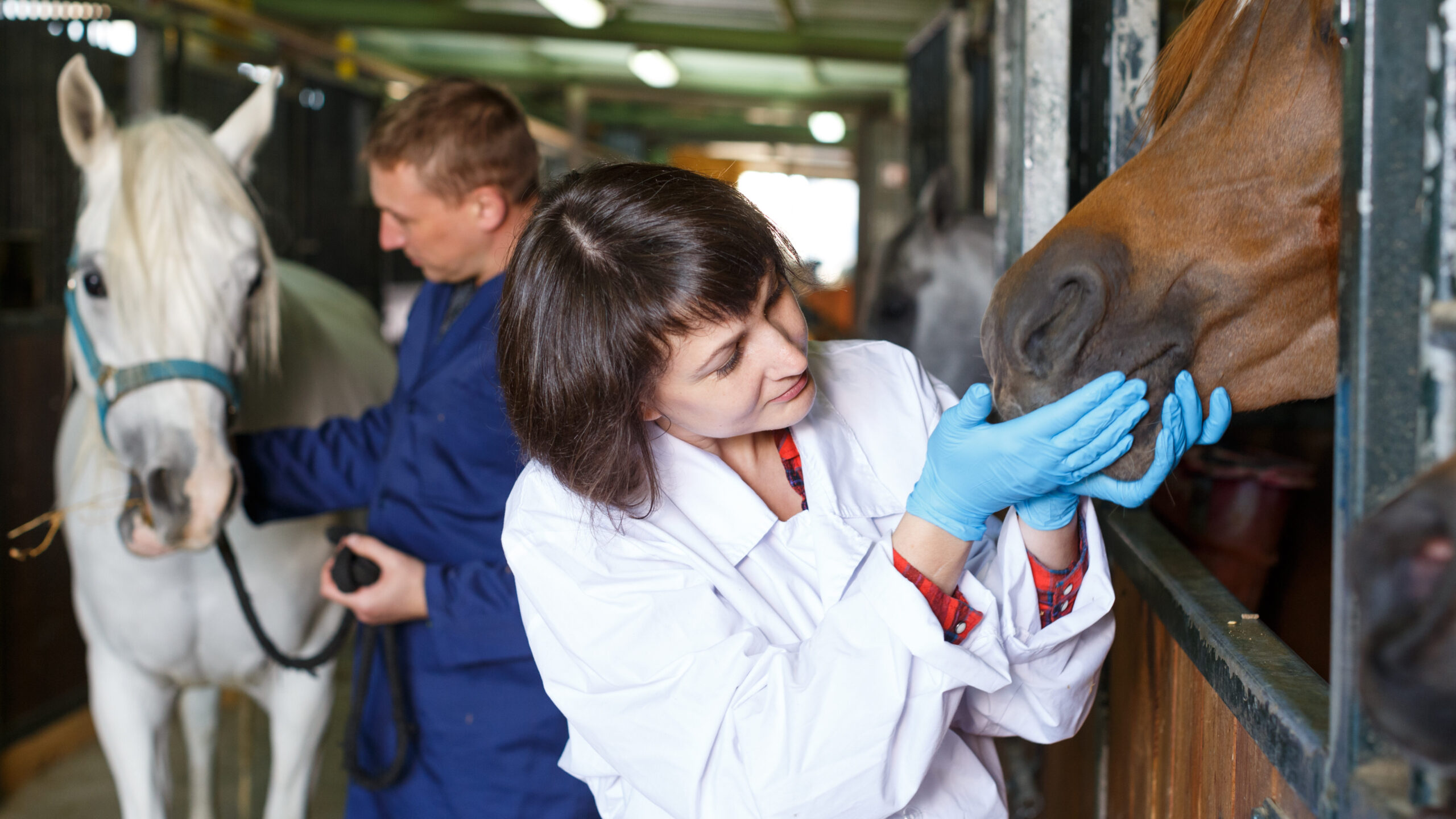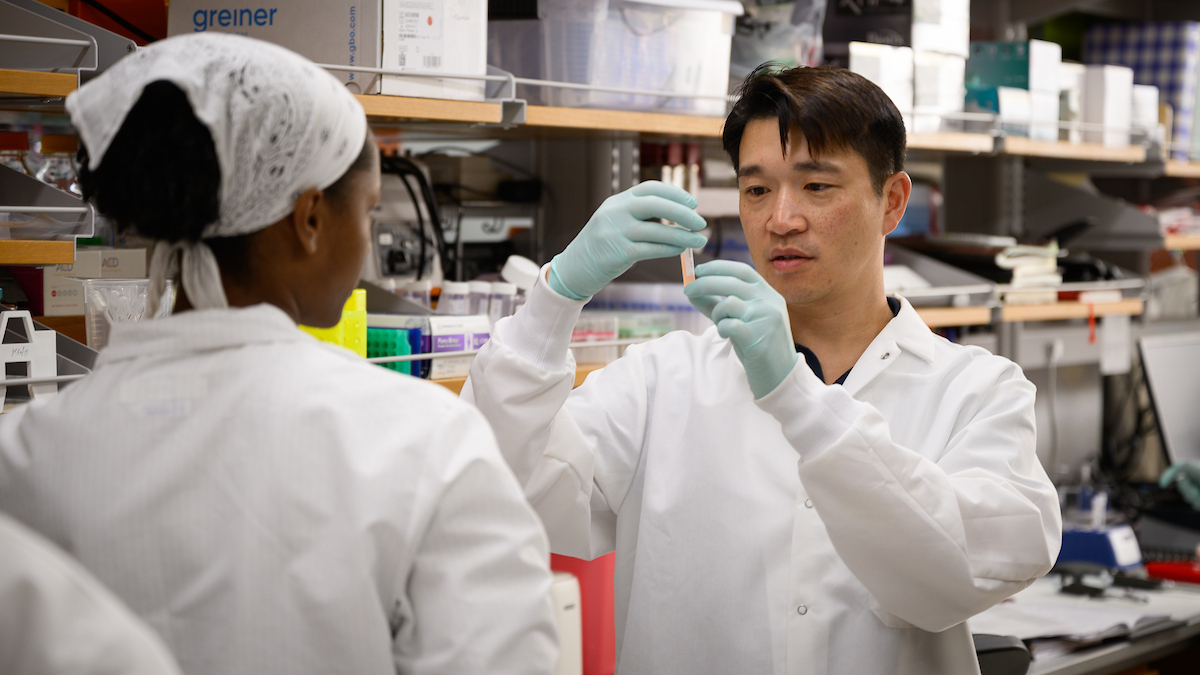Research Roundup NC State Veterinary Medicine, August 2024
Advocate and advance are two CVM values that continually drive the researchers at the NC State College of Veterinary Medicine. See how our faculty have been busy this summer finding innovative solutions to everyday hardships facing veterinary and human medicine.

Discovering a Promising New Treatment for Infections Caused by Staphylococcus aureus
Scull G, Aligwekwe A, Rey Y, Koch D, Nellenbach K, Sheridan A, Pandit S, Sollinger J, Pierce JG, Flick MJ, Gilbertie J, Schnabel L, Brown AC.
Staphylococcus aureus is one of the most dangerous staphylococcal bacteria that cause staph infections. The bacteria often cause skin infections but can spread through the bloodstream and infect other organs, posing a significant threat to immune-compromised individuals. One of the reasons this particular strain is so worrisome is because S. aureus has a biofilm matrix that acts as a barrier and keeps immune cells from being able to reach the bacteria within the matrix, limiting the ability of antimicrobial drugs to eliminate S. aureus infections. A recent study led by experts from across NC State University, including faculty from the College of Veterinary Medicine, and UNC-Chapel Hill tested a novel treatment using antimicrobial loaded fibrin-based nanoparticles (FBNs) to administer antibiotics into the biofilm of S. aureus. The FBNs were made up of the same material that S. aureus generates for its biofilm, meaning the bacteria would incorporate the FBN particles into its matrix as well once the particles were introduced. From there, the antibiotics within the FBN particles could treat the infection. This exciting discovery shows FBN-antibiotic delivery has the potential to be a therapeutic tool for the treatment of S. aureus infections.
This study was published in the Journal of Biomedical Materials Research and can be found here.
Evaluating the Success of Veterinary Students in the Clinical Environment
Hepworth-Warren KL, Erwin-Craig SJ, Love K.
Although being able to place an intravenous catheter (IVC) in a horse is a necessary skill for graduating veterinary students, many times clients, faculty or technical staff are reluctant to allow students to be involved in placing the catheter out of fear of complications. A unique aspect of research at a teaching hospital is the ability to study students as they learn required skills and techniques in real time to assess how well they are absorbing information and applying it to clinical practice. Clinician researchers from our Department of Clinical Sciences conducted a retroactive study where they reviewed data from medical records of 455 IVCs placed in 394 horses. They gathered that the total rate of complications was 15.6% and that the most common type of complication was vein swelling. Students were involved in 87 of the IVC site preparations and placements, and there were no statistically significant differences in complication rates between the IVC sites prepared or placed by veterinary students versus nonstudent personnel. This data show that although there may be some hesitation with students performing these types of placements rather than someone with more experience, their knowledge from both the classrooms and laboratories at NC State College of Veterinary Medicine has prepared them adequately for clinical duties.
The study was published in the Journal of the American Veterinary Medical Association and can be found here.

Protecting the Gut Microbiota of Weaning Piglets
Boston TE, Wang F, Lin X, Kim SW, Fellner V, Scott MF, Ziegler AL, Van Landeghem L, Blikslager AT, Odle J.
The abrupt change in diet and overall stress during the weaning process of young piglets can damage their growth and development. Antibiotics have historically been used post-weaning to lessen the pathogenic bacteria in their guts, but the growing concerns of antimicrobial-resistant bacteria have caused veterinarians to investigate other avenues of protecting the stomach bacteria and promoting a healthy GI tract in these young pigs. A recent study, involving researchers from CVM’s Departments of Clinical Sciences and Molecular Biomedical Sciences, and university collaborators from NC State’s College of Agriculture and Life Sciences, investigated whether the dietary prebiotic galactooligosaccharide (GOS) could improve growth and intestinal health in the piglets if supplemented both pre- and post-weaning. The results found that the prebiotic GOS supplements were most effective in proving piglet growth when supplied post-weaning.
The full study was published in the Journal of Science and Biotechnology and can be accessed here.
Finding Solutions for Colostrum Replacement in Beef Calves Delivered by Cesarean Section.
Chamorro MF, Saucedo M, Gamsjaeger L, Reppert EJ, Miesner M, Passler T.
Colostrum is the first form of breastmilk released by the mammary glands and is full of nutrients, including antibodies, providing a healthy start to the immune system of young mammals. In calves, colostrum is not only beneficial but considered necessary, as calves who do not receive passive immunity from colostrum have been shown to have a higher mortality rate. One factor that can affect whether a calf adequately receives colostrum actually has to do with the birth itself. After a C-section delivery, it is very likely the mother will not be able to stand and feed them the colostrum, and it is crucial the calves receive it as soon as possible. Currently, there are no colostrum replacement recommendations for beef calves. Therefore, a team of researchers, including Dr. Lisa Gamsjaerger of NC State’s College of Veterinary Medicine, studied whether administering a colostrum replacement product alone or in combination with maternal colostrum would increase the antibody concentrations of beef calves delivered by C-section. The results of this study showed that when compared with natural nursing, neither replacing nor supplementing colostrum resulted in higher antibody concentrations in the beef calves. The team emphasizes that more research is needed for innovative strategies for colostrum replacement in young calves delivered by C-section to ensure the health and safety of these important animals from the moment they are born.
This study was published in Veterinary Sciences and can be found here.

Testing a New Diagnostic Procedure for Lyme Disease in Humans
Lee G, Pretsch P, Ursery L, Giandomenico D, Abernathy HA, Evans L, Qurollo BA, Breitschwerdt EB, Boyce RM.
Lyme disease, caused by infection with Borrelia burgdorferi bacteria from the bite of certain tick species, is the most common vector-borne disease in the United States. It can be difficult for doctors to catch and diagnose Lyme disease quickly, and the disease can pose lifelong complications to victims. Researchers are aiming to improve access to testing and early detection of infection by developing rapid, point-of-care tests that could simplify the diagnosis and expedite the treatment. The SNAP 4Dx Plus test (IDEXX Reference Laboratories, Inc., Westbrook, ME, USA) is used in veterinary settings to screen for annual heartworm and tick-borne disease in dogs. Researchers from the College of Veterinary Medicine’s Department of Clinical Sciences studied whether the canine point-of-care SNAP 4Dx Plus test could also be used for human diagnosis. The results showed that the SNAP 4Dx Plus test, though effective for canine use, was not as accurate for diagnosing Lyme Disease in humans. The team believes this could be because of different levels of Borrelia burgdorferi antibodies between humans and canines. Researchers are continuing to find new diagnostic tools for the early detection and treatment of Lyme Disease.
The research was published in Vector-Borne and Zoonotic Diseases and can be found here.
Student Summer Research Series
Fifty-seven DVM students spent their summers immersed in mentored lab research studies through the 10-week Veterinary Scholars Program. This summer, we highlighted three projects to showcase their aptitude and innovation!
Dileydis Soto Montes and Sara Fitzgerald

- Categories:


